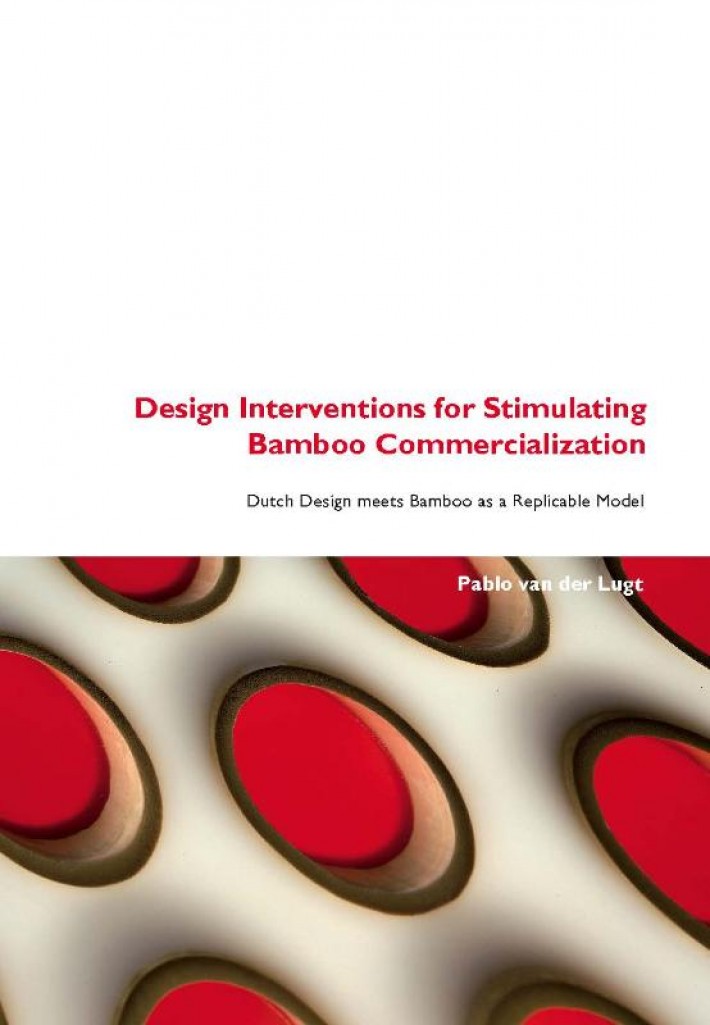Personen
Pablo van der Lugt
NUR Codes (sub)
950 Technische wetenschappen algemeen
Vastgoedmanagement
Veiligheid en milieu in laboratoria
Electronic power control 2. Electronic motor control
Delfts goud

Design Interventions for Stimulating Bamboo Commercialization Dutch Design meets Bamboo as a Replicable Model Materials have a considerable impact on the environmental sustainability of the products in which they are used. Due to the increasing population and consumption worldwide, more raw materials are consumed than can be produced globally, making especially resource depletion of both abiotic and biotic resources an urgent problem. Due to its good properties and high biomass production, bamboo - a giant grass - could have the potential to help meet the increasing demand for raw materials, especially as a substitute for scarce and slow growing tropical hardwood. Nevertheless, in Western Europe, bamboo, especially in industrial form, is still a largely unknown material with a small market share. In this action research it is investigated how the commercialization of bamboo may be stimulated in consumer durable markets through the active integration of designers as potential material champions by means of design workshops. Besides providing insight into the effectiveness of this method and the potential replicability to deploy similar design interventions to stimulate the commercialization rate for other new or lesser known materials as well, this PhD thesis also presents the prototypes developed during the project 'Dutch Design meets Bamboo' as well as the findings of the 21 participating Dutch designers about the potential of bamboo as a Western designer's material. Finally, the environmental sustainability of the various bamboo materials deployed during the design intervention are assessed based on LCA-methodology and annual yield predictions revealing if bamboo is actually a more environmentally sustainable choice than timber. Contents PART I: INTRODUCTION 1 Introduction 2 Intervention Development 3 Research Design PART II: RESULTS 4 Product Evaluation; Market Potential and Innovative Character 5 Product Evaluation; Environmental Sustainability 6 Material Evaluation 7 Impact Evaluation 8 Process Evaluation & Advice for Improvement PART III: CONCLUSIONS 9 Conclusions & Recommendations References Samenvatting Appendix A: Respondents Appendix B: Obstacles during New Material Commercialization Appendix C: Obstacles during Bamboo Commercialization Appendix D: Role of Materials in Product Design Appendix E: The Image of Bamboo Appendix F: Main Elements of Action Research Appendix G: Factors of Success and Failure during Product Innovation Appendix H: Product Prototype Evaluation Sheets Appendix I: Environmental Assessment of Bamboo Materials Appendix J: Carbon Sequestration by Bamboo Epilogue Publications Colophon Curriculum Vitae http://www.vssd.nl/hlf/m015.htm